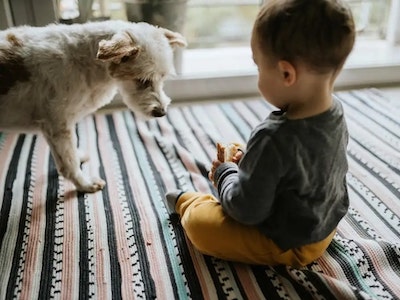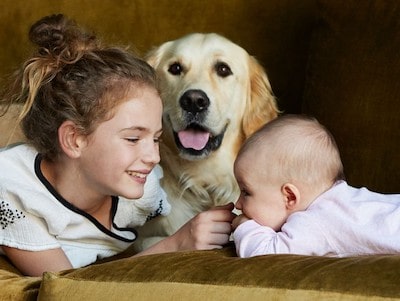If you are an expectant parent or have a newborn at home, you might be wondering how to prevent your child from developing food allergies. Food allergies are a common and serious problem that affects millions of children worldwide.
They can cause symptoms ranging from mild itching and swelling to life-threatening anaphylaxis. Some of the most common food allergens are eggs, milk, nuts, wheat, and soybeans.
While there is no definitive way to prevent food allergies, a new study from Japan suggests that having a pet cat or dog in the house might help. The study, published in PLOS ONE, analyzed data from over 65,000 infants who participated in the Japan Environment and Children’s Study, a nationwide birth cohort study.
The researchers found that children who were exposed to pet cats or indoor dogs during fetal development or early infancy had a lower incidence of food allergies compared to other children.
Table of Contents
The Benefits of Pet Exposure
The study looked at the association between pet exposure and food allergies in children at 12 months of age. The researchers asked the parents about their pet ownership and exposure during pregnancy and after birth.
They also collected information on the children’s medical history, family history, lifestyle factors, and environmental factors. They then compared the rates of food allergies among different groups of children based on their pet exposure.

The results showed that children who were exposed to indoor dogs and cats had a significantly lower incidence of food allergies than those who were not. Specifically, children exposed to dogs had a 23% lower risk of egg allergy, a 17% lower risk of milk allergy, and a 38% lower risk of nut allergy.
Children exposed to cats had a 29% lower risk of egg allergy, a 22% lower risk of wheat allergy, and a 32% lower risk of soybean allergy.
The researchers also found that the timing of pet exposure mattered. Children who were exposed to pets both during pregnancy and after birth had the lowest risk of food allergies.
Children who were exposed only during pregnancy or only after birth had a slightly higher but still reduced risk. Children who were not exposed at all had the highest risk.
The Possible Mechanisms Behind Pet Protection
The study did not investigate the exact mechanisms behind how pets might protect children from food allergies, but the researchers proposed some possible explanations.
One possibility is that pets act as a source of microbial diversity, which can influence the development of the immune system and the gut microbiota in infants. Exposure to diverse microbes can help prevent the immune system from overreacting to harmless substances like food proteins.

Another possibility is that pets produce allergens themselves, which can induce tolerance in infants. Exposure to low doses of animal allergens can train the immune system to recognize them as harmless and not trigger an allergic response. This might also cross-protect against other allergens like food proteins.
The Limitations and Implications of the Study
The study had some limitations that need to be considered before drawing any conclusions. First, the study relied on self-reported data from the parents, which might be subject to recall bias or misclassification.
Second, the study did not measure the actual exposure levels or types of pets in each household, which might vary widely. Third, the study did not account for other factors that might influence food allergy development, such as breastfeeding, diet, genetics, or medication use.

Despite these limitations, the study provides valuable insights for further research into the role of pets in preventing food allergies. The study also suggests that having a pet cat or dog in the house might be beneficial for expectant parents or parents with young children who want to reduce their child’s risk of food allergies.
However, this does not mean that parents should rush to get a pet if they don’t already have one or if they are allergic themselves. Pets are a big responsibility and require proper care and attention. Parents should consult with their doctor before making any decisions about pet ownership.
Conclusion:
The study’s findings highlight the potential benefits of pet exposure, specifically indoor dogs and cats, in reducing the incidence of food allergies in children. Although further research is necessary to establish causation and understand the underlying mechanisms, this study opens doors for future investigations.
By unraveling the complex interplay between pet exposure and food allergies, we can hope for a future where children can enjoy the companionship of pets without the fear of allergic reactions. Parents, healthcare providers, and policymakers can collaborate to create a safer and healthier environment for children vulnerable to food allergies.
As research continues, the insights gained from this study will contribute to our understanding of childhood food allergies and guide future efforts to prevent and manage them effectively.


